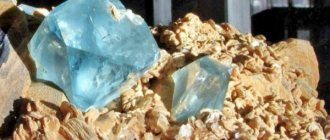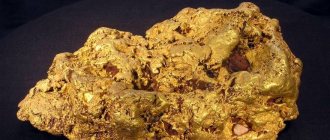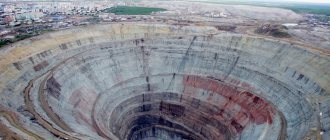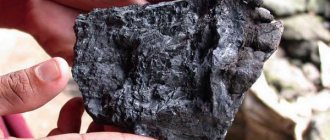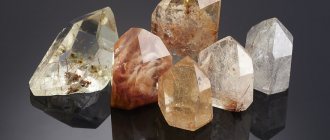Dolomite flour (or simply dolomite) is popular among summer residents due to its low cost and natural composition. Take note of these unexpected ways to use dolomite flour in the garden!
Dolomite flour is an environmentally friendly soil fertilizer. It is consumed in small doses and is inexpensive, so it helps improve the soil even over a large area without much expense. And all this becomes possible thanks to the beneficial properties of dolomite flour.
Flour is extracted by crushing the mineral dolomite. As a result, carbonate powder of white, gray, and sometimes reddish-brown color is obtained.
Dolomite flour heals the soil
Dolomite flour suppresses soil infections: cabbage clubroot, scab. It activates the activity of beneficial microorganisms and annelids, which help improve the health of the soil.
According to the Mitlider method, 7-8 g of boric acid is added to this fertilizer (per 1 kg of dolomite). The mixture is scattered on the surface of the soil, then buried to a depth of 10-15 cm. On heavy soils, use 200 g of this fertilizer per linear meter of a bed 40-45 cm wide, and on light soils - 100 g.
In heavy clay soil, dolomite flour is added annually, and on lighter soils it is sufficient to use it once every 2-4 years.
Application of dolomite in construction
Ground dolomite is an ideal option for the Russian market of dry construction mixtures. The grains of this material, unlike quartz sand, which is actively used in most Russian enterprises, have a cubic shape. It provides increased adhesion. Such a filler, as practice has proven, in comparison with quartz sand, has the best technological indicators.
Dry mixtures containing lime filler, based on existing European standards, are recognized as the best. They belong to the highest class mixtures. You can often find dolomite filler in the composition:
- sealants,
- mastic,
- rubber products,
- linoleum,
- paint and varnish products and so on.
Dolomite flour reduces soil acidity
If buttercups, horsetails, green mosses, and sorrel are actively growing on your site, it means that the soil in this area is acidic. And most garden crops like neutral, slightly acidic and slightly alkaline soil. Therefore, before planting garden and vegetable plants, you need to add dolomite flour to the soil to reduce the acidity level.
The acidity of the soil in the area can be measured using litmus paper. But if you don’t have it on hand, take a handful of soil from the garden, spread it evenly on a flat surface (the soil layer should be about 5 mm) and pour a little vinegar on top. The appearance of foam indicates that your site has neutral or alkaline soil. If the vinegar just soaks in like water, then the soil is acidic.
- What you need to know about soil pH for a blooming garden and a productive vegetable garden
How to find out whether you have acidic or alkaline soil on your site and what to do with this information.
- Soil acidity: determine and regulate
If your soil is highly acidic, this can seriously harm your plants. How do you know when it's time to take action?
- Soil type on site - how to determine and improve the structure
To find out for yourself what type of soil predominates on your site, just carry out a few simple manipulations.
Normal acidity indicator is pH 5.5-7. At a pH below 4.5, the soil is acidic. In this case, you need to add 500-600 g of dolomite to the soil per 1 sq.m. A pH level in the range of 4.5-5.2 indicates medium acidic soil - it is enough to add 450-500 g of dolomite flour. And in slightly acidic soil (pH 5.2-5.6) you need to add 350-450 g.
Varieties of mineral
- Granerite and mangandolomite - contain 8-9% manganese oxide (Mn) in the first case and up to 20% in the second case, the impurity gives the stone a pink color.
- Brossite and ferrodolomite - containing up to 10% iron carbonate (Fe), which colors the mineral in brick-rusty shades.
- Cobalt dolomite - containing 5.17% cobalt oxide (Co), which gives the mineral its red color (mined in the Czech Republic).
- Taraspite - containing not only iron (Fe), but also nickel (Ni), is characterized by the presence of stripes of a green tint.
- Teruelite is a black dolomite mined in Spain and is the rarest.
- Plumbodolomite is a stone with an admixture of lead (Pb) and, accordingly, grayish-blue shades.
- Gurkhofian is a mineral with a microcrystalline structure.
Dolomite flour enriches the soil and nourishes plants
Dolomite flour is also used on neutral soils, since it has a beneficial effect on the development of plants, strengthens their immunity and increases productivity. Dolomite helps maintain the required level of hydrogen and calcium ions in the soil, and also replenishes nutrients that are consumed during the constant cultivation of various crops.
For feeding, it is best to use finely ground flour. It is recommended to add 7-8 g of boric acid (per 1 sq.m of soil) and 0.5 tsp. copper sulfate, mix thoroughly and incorporate into the soil.
You can also mix dolomite flour with water in a ratio of 1:10 and pour the resulting “milk” over plants located in open ground, a greenhouse or on a windowsill at home. This fertilizing is especially effective for soil deficient in magnesium. Beetroot, cabbage of all kinds, potatoes, and turnips respond best to it. But for plants that prefer high acidity (sorrel, blueberries, cranberries, lingonberries), dolomite flour is not suitable.
Application of dolomite in Russia
Dolomite is a durable stone, but it can be easily processed. This makes it an ideal building material and raw material for the production of small architectural details, including garden ones. This type of natural stone has been used in our climatic conditions for many centuries. Dolomite buildings of past centuries continue to delight us with their architectural beauty and once again confirm the frost resistance and strength of the material.
Being distant relatives of marble, dolomitic limestones have long been an indispensable material for creating sculptures. Dolomites in Ancient Rus' were often used for the construction of temples, household and economic structures. Most of them are considered architectural masterpieces.
Often strong dolomite rocks in the construction industry are used for paving paths, making steps, and various flat fragments for the garden. The suitability of this amazing material, due to its strength, for the construction of rock gardens and retaining walls is a huge advantage of dolomite. Are harder grades subjected to polishing, which expands the scope of application? It is also used in finishing and cladding of facades.
Combinations of dolomite with garden plants have become very popular recently, but special care is required when creating compositions. There is no doubt that most plants feel excellent next to dolomite, however, it is not recommended to include dolomite in the composition if you are planting plants that prefer acidic substrates, such as:
- hydrangea and rhododendron,
- Erica, heathers and wild rosemary,
- blueberries, cranberries, lingonberries,
- dropsy, etc.
Dolomite flour improves fertilizer efficiency
In acidic soils, phosphorus is poorly absorbed by plants. Therefore, thanks to dolomite flour, which deoxidizes the soil, phosphorus fertilizers are better “digested” by garden and vegetable crops.
But keep in mind: dolomite cannot be applied together with ammonium sulfate, ammonium nitrate, urea, superphosphate, manure and compost, as this combination of fertilizers can cause a chemical reaction that will lead to the loss of the beneficial properties of the fertilizer. Therefore, it is recommended to first apply flour to the site, and some time later - mineral fertilizers.
Natural properties of dolomite
Dolomite is a rock-forming mineral. It belongs to the class of carbonates, being fireproof and very resistant. It is endowed with the magnificent natural properties of natural stone. Among them, it is especially worth noting:
- high strength,
- nice drawing, which makes it possible to create unusual compositions.
The color of dolomite goes perfectly with almost all materials, both natural and artificial. As a natural stone, dolomite is endowed with the following physical characteristics:
- durability;
- frost resistance;
- high strength.
The main colors for dolomites are considered to be four, but in nature they are usually found in white, brown, and yellowish. Occasionally, valuable pink dolomites can be seen in their natural form, as well as translucent and transparent ones.
Dolomite flour increases productivity
Dolomite flour promotes the proper development of fruits and their rapid formation. Leafy garden crops also grow green mass faster.
The thing is that flour consists mainly of calcium and magnesium, which contribute to the rapid growth of roots, stems, leaves and ripening of fruits. At the same time, the quality of vegetables improves. For example, the protein content in potatoes increases. In addition, dolomite flour binds radionuclides in the soil, so harmful impurities do not penetrate into the fruit.
Environmental properties of dolomite
Dolomite facing tiles are an absolutely natural material that has filtering properties. Dolomite has a beneficial effect on the indoor microclimate. If you moisten a dolomite wall with water during hot weather, the room will maintain an optimal microclimate in terms of humidity. During the cold season, this natural finishing material will retain heat much more reliably than glass or concrete. Due to its organic origin and the content of marine microorganisms in the rock, a room decorated with this material can safely be called an environmentally friendly home.
Dolomite flour is non-aggressive
Slaked lime can also be used to deoxidize the soil, but it does not always have a positive effect on plants because it is very aggressive. After applying lime, garden crops slowly absorb phosphorus, so it is best to apply it to the soil only in the fall after harvesting. And dolomite flour can be embedded in the soil throughout the year (even in winter): it does not burn the roots and leaves of plants.
In winter, dolomite is scattered on the surface of the snow, and when it melts, it is perfectly absorbed into the soil, reduces its acidity and fertilizes it.
Analogs
If you don’t have dolomite flour on hand, you can use its analogues to deoxidize the soil. These include:
- lime;
- wood ash;
- chalk.
One of the most common analogues of dolomite flour is lime. It is also used by many summer residents to deoxidize the soil on the site. But these supplements have significant differences in composition. Dolomite contains 8% more calcium than lime. In addition, it contains magnesium, which is absent in lime.
It is best to use lime only in the fall, since if the dosage is incorrectly selected, it can cause burns to the foliage. Dolomite powder acts more gently, providing a gradual but gentle effect without harm to vegetable crops.
To normalize the acidity of the soil and additional fertilizing, you can use wood ash. It additionally saturates the soil layers with useful mineral elements. But you need to take into account that to obtain a positive effect, wood ash will require at least 3 times more than dolomite powder.
Chalk is an analogue of dolomite powder. Grind the fertilizer to a powder and scatter it over the surface of the soil, then loosen it. It saturates the soil with calcium and other useful elements. But chalk contributes to soil salinity, so frequent use of such fertilizing is not recommended.
Dolomite flour is a natural and environmentally friendly fertilizer, often used in the garden. Most often, this organic product is used to normalize the acidity of the soil and restore its fertile qualities. Dolomite fertilizer saturates the soil with useful micro- and macroelements, strengthens the root system of plants and stimulates their growth, increases productivity and improves the taste of fruits. When used correctly according to the instructions, dolomite flour will become an indispensable assistant in growing vegetables, fruits and berries and ornamental crops.
Precautionary measures
When using dolomite flour, a number of rules must be strictly observed. First of all, it must be used in accordance with the instructions and in doses not exceeding those recommended.
Because when applied in excess, dolomite flour can shift the acidity of the soil into the slightly alkaline range. And such soil is liked by a very limited range of plants.
Therefore, before adding dolomite, you need to find out the acidity of the soil. This is best done using indicator paper or a special device - a pH meter.
